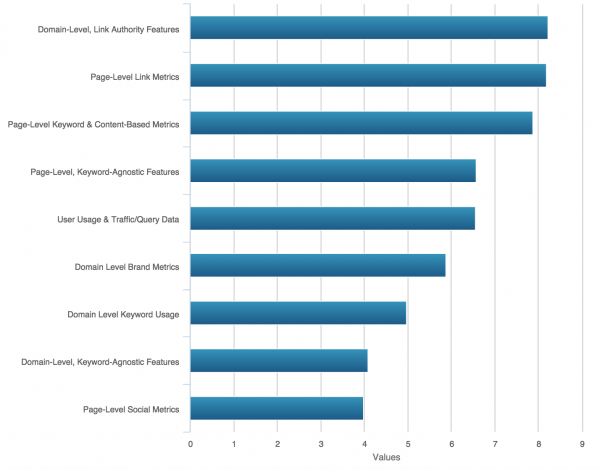
5 SEO Rules for the Travel Industry
Note: This post was originally featured on Tnooz.com.
*****
When it comes to SEO, there are best practices which are universal, immutable laws, and then there are a slew of strategies and tactics that you can/should employ depending on your industry, how competitive it is, and just exactly what it is that the competition is doing.
The travel industry is particularly competitive, featuring some of the largest household names in ecommerce. It’s also widely varied, spanning the gamut of accommodations, flights, and countless niche services, such as tours and other activities. Nevertheless, there are five (almost) immutable SEO laws that travel marketers should follow, regardless of the product/service they offer.
Why SEO: Building Equity Through Intentional Targeting
To be fair, SEO brings its own set of inconvenient truths into the marketing mix. For instance, it’s a medium- to long-term acquisition strategy that is characterised by economies-of-scale that don’t kick-in until you’ve invested a minimum of time and money into the channel. That investment, however, is well worth it for two compelling reasons.

First, unlike other online advertising channels, SEO allows you to build equity. Essentially, SEO is more about earning visibility instead of outright buying it. Once you’ve achieved certain rankings, for instance, every click you get from those ranking positions costs less than each previous click — unlike PPC or Facebook Ads.
Second, SEO represents the most targeted source of traffic online. Why? Well, because organic search users are (1) already interested in your products or services, and (2) actively looking for them. In other words, they are already one step down the conversion funnel.
When it comes to building this online equity in the travel industry, and reaching these pre-qualified users, there are five mantras that should inform your SEO strategy, how you approach it, and the tactics you use to realise it.
1. Targeting: Destination, Destination, Destination
The vast majority of travel-related searches are destination-specific. For instance, most travellers will plan their holiday by searching for the service they’re looking for plus the destination — e.g. “Maui hotel deals” or “cheap flights Costa Rica”.

This might seem self-evident, but it has SEO implications for everything from site architecture to content strategy to social media management. Specifically, whether you are marketing properties or flights all over the world or in only one specific region, you’re going to need to develop a number of destination-specific assets to support your rankings for each destination, including:
- keyword research per destination
- geo-targeted landing pages (e.g featuring properties, flights, etc.) with optimized Title tags and Meta Descriptions
- branded content (i.e. destination-specific travel themes)
- optimized local social profiles (e.g. Yelp, Google Business Pages, TripAdvisor, etc.)
It’s one thing to rank for generic, short-tail keywords like, such as “cheap flights” or “all inclusive resorts”, but the true value of SEO is its ability to refer users that are already one (or two) steps down the conversion funnel, and the best way it can do that for travel is to be destination-specific.
2. Onsite SEO: Coding Navigation Funnels
Once your SEO targets and priorities are mapped out, it’s time to start developing destination-specific assets that reflect them. Those assets, however, will not be effective if search engines can’t crawl and index them.

Especially with ecommerce portals, you want to offer users multiple navigation paths (e.g. categories, curated travel themes, site search) to find what they’re looking for. There’s more than one way to code (and render) that content, however, and what makes sense for usability doesn’t always align perfectly with SEO goals.
Regardless of the user-experience you’ve created, then, you must have (destination-specific) directories that search engines can find, read, and understand. This includes:
- linking to destination-specific directories in navigation menus
- using the Fetch as Google tool to ensure that your product/service results are indexable
- marking-up destination-specific directories and product/service pages for structured data using Schema.org schemas
- submitting an XML sitemap to Google that includes your destination-specific directories
- and monitoring your site for crawl errors that might affect your rankings
Essentially, until search engines can properly crawl and index your site (especially its destination-specific directories), your ability to rank on targeted keywords will be limited, and most of your other SEO efforts will be yield little-to-no ROI.
3. Relevance: Content Strategy
Developing indexable destination-specific subdirectories with optimized title tags, meta descriptions, header tags, and copy is only the first step in bolstering your site’s relevance for targeted keywords. Search engines are also partial to sites that update frequently by producing quality, relevant content on an ongoing basis.

Quality content, though, is like getting tattoos: good tattoos aren’t cheap, and cheap tattoos aren’t good. This means that you’ll need to invest in a content strategy with a proactive and long-term vision behind it — i.e. one that (1) reflects each of your targeted destinations, (2) supports your social media efforts with quality, shareable content assets, and (3) funnels relevance and authority back to destination-specific directories and product/service pages by linking back to them (in a non-spammy way, of course).
“The Luxury Retreats Magazine is a significant part of our greater SEO strategy,” says Editor, Jenny Cahill-Jones. “It not only allows us to engage users via email and social, it also helps Luxury Retreats gain visibility around travel themes and topics that luxury travellers are searching for.”
A proactive content strategy, then, is about more than bolstering your site’s keyword relevance and creating assets you can share/promote on social media. It’s also about developing assets that can accrue relevance and authority on different targeted keyword combinations and, in turn, funnel it back to the product/service pages which are ranking priorities.
4. Offsite SEO: Social Signals & Links
Once your site is optimized and you’re producing content that supports your rankings on various travel themes, it’s time to take your SEO offsite. According to the Moz Search Engine Ranking Factors 2015, backlink metrics comprise the two most important factors influencing a site’s ability to rank, with social metrics also have an impact on rankings. So whether you like it or not, taking SEO seriously means rolling up your sleeves, and proactively building links and generating social signals.

Linkbuilding poses its own set of unique challenges. Paying for links is black hat and will get you penalized (if you get caught), guest posting doesn’t really work anymore, and blogger outreach is tedious, time-consuming, and often does not pan out. Nevertheless, you have to get links if you want to rank competitively, and that’s where content marketing comes in.
Fortunately, now that you’ve invested in a competent (or even talented) content team, producing linkbait should be part of their mandate — i.e. any kind of sensational or useful content (blog posts, infographics, travel guides, etc.) that bloggers and journalists are likely to cover and link back to. Just consider the travel site that got over 100 links by making a map of Game of Thrones’ filming locations. Linkbaiting done well works well.
Of course, Social Signals are also an important part of offsite SEO. Ongoing social activity around your content shows search engines that you are relevant to users that are real people, so don’t just count on the linkbait to generate Tweets, Shares, and Likes. Invest in community management, as well as an ad budget, to promote your less-sensational, non-linkbait content, too.
5. Measurement: Traffic > Rankings
Like any marketing campaign, your SEO efforts will need to be tracked and measured. While strong rankings lead to more traffic, however, it’s also important to not pay too much weight on your rankings as a KPI.

Basically, between Personalized Search and Google moving more toward an AI ranking algo, user’s’ search experience is becoming so personalized that accurately monitoring your rankings is difficult at best, and sometimes meaningless. Even monitoring tools that can provide you with agnostic ranking data can’t tell you what you really need to know: how well you are ranking among members of your target market.
Of course, agnostic ranking data can still help you gage changes in your overall visibility in the SERPs, as well as be correlated with traffic fluctuations. But, it’s the quality and fluctuations in your Organic Search traffic, itself, that you should be focusing on.
What pages bring in the organic search traffic? How does that traffic perform? Which pages do not receive organic visits? How do they differ from the ones that do?
These are the questions you should be asking yourself because the data you need to answer them is more readily available and verifiable.
Demystifying SEO: A Synergetic Approach
SEO is neither rocket-science nor smoke-and-mirrors nor snake-oil. It doesn’t require an advanced degree, there are no mysteries behind its successful implementation, and it can generate higher quality traffic than any other channel (when done right).
Rather, SEO is more about committing to certain best practices on an ongoing basis. Of course, it requires in-depth knowledge of those best practices, as well as the experience to adhere to them in the face of changing trends, technologies, and market conditions, but it really comes down to is a willingness to approach it as part of a greater digital strategy, and invest in it in the medium- to long-term.
Targeting the right users, continually optimizing your site as it evolves, consistently producing quality content, and seeding it across various communities are all tactics that will impact other marketing efforts (IT, design, PR, etc.). By taking a synergetic approach to SEO, however, and allowing SEO to inform other efforts while those efforts support SEO will keep your costs down, maximize your standing in the SERPs, and increase the ROI of both SEO and other efforts.